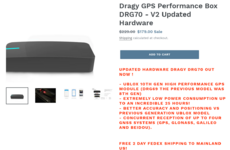Navigation
Install the app
How to install the app on iOS
Follow along with the video below to see how to install our site as a web app on your home screen.
Note: This feature may not be available in some browsers.
More options
Style variation
-
Hi Guest !
Welcome to the 500Eboard forum.
Since its founding in late 2008, 500Eboard has become the leading resource on the Internet for all things related to the Mercedes-Benz 500E and E500. In recent years, we have also expanded to include the 400E and E420 models, which are directly related to the 500E/E500.
We invite you to browse and take advantage of the information and resources here on the site. If you find helpful information, please register for full membership, and you'll find even more resources available. Feel free to ask questions, and make liberal use of the "Search" function to find answers.
We hope you will become an active contributor to the community!
Sincerely,
500Eboard Management
You are using an out of date browser. It may not display this or other websites correctly.
You should upgrade or use an alternative browser.
You should upgrade or use an alternative browser.
Recommendations for performance meters / dagaloggers?
- Thread starter WDB748372
- Start date
@WDB748372 - that is a great question. I started using a RaceTechnology AP-22 meter nearly 20 years ago, at the time it was a pretty good solution, although it had no GPS capability. Around 2011, I upgraded to the AX-22 meter for ~$350. The AX-22 has an external GPS antenna, and also an input to log engine RPM from the tach (cool stuff, if you need that, may not work on a 210 though). I found the AX-22 was within about 1-2% of dragstrip timing lights which was adequate for my needs.
Both of these old RaceTech units are relatively obsolete by modern standards. I'd like to upgrade to something newer and more accurate that relies more on high-res GPS positioning, and less on internal G-force meters. I haven't looked into Dragy yet. These are the units I had been considering, although I have not seriously investigated any of them yet. I believe @Beater400E has the Racebox Mini-S.
Racebox Mini-S ($250):
Mini S | RaceBox
Racebox ($350):
RaceBox
Vbox Performance Box ($350):
Performance Box - Lap Timer, Speedometer, Accelerometer
GPS based performance meter that allows you to measure G-forces, speed, lap & split times, 0-60, braking distance and many more.
Vbox Performance Box Touch ($860 !!):
Performance Box Touch
Calibrated Precision Performance Meter & Lap Timer with Easy to Use Color Touchscreen
Make sure the meter is capable of measuring between any 2 selected speeds, and that it doesn't have "fixed" speeds only. I.e., I want to test from 0-100, and also 0-130, etc because 0-60 times are often useless due to traction issues on the street. The AP-22 and AX-22 both had a datalog output function, the AX-22 captures far more data (100Hz, IIRC?) for detailed analysis if desired. I want a newer unit with similar capability. It doesn't appear that RaceTechnology still manufactures anything similar to the AX-22, Racebox, or Vbox... they primarily have multi-thousand-dollar racing/industrial dataloggers, which are awesome, but far beyond my price range.

Thanks for the valuable info as always!
The Racebox Mini-S does exactly just that although a bit more pricer. @Beater400E would love to hear your experience with it.
This was going to be a follow up question. I was sold on the Dragy unit due to it's accuracy and easy to use interface but couldn't tell if it was capable of measuring between any two speeds. That was a huge drawback. There looks to be some default metrics only.Make sure the meter is capable of measuring between any 2 selected speeds
The Racebox Mini-S does exactly just that although a bit more pricer. @Beater400E would love to hear your experience with it.
Attachments
I've been happy with the Mini-S so far. Admittedly, I have not spent a ton of time exploring all its features, and I have not taken it to the track to compare accuracy between an NHRA timing system and the Racebox.
I can say that the Mini-S appears to be ruggedly built, and the fact that it does not need to be constantly paired to my phone to capture data is a big plus.
I've never had another performance meter, so I can't tell you how it compares with any others. I do know that one key thing to look at is how many GPS pings per second a device us capable of. The Mini-S is capable of 25Hz, which basically means it should be accurate to within 0.04 seconds on your leave. That makes it one of the most accurate meters on the market, and that, along with the affordable price is why I chose it.
I can say that the Mini-S appears to be ruggedly built, and the fact that it does not need to be constantly paired to my phone to capture data is a big plus.
I've never had another performance meter, so I can't tell you how it compares with any others. I do know that one key thing to look at is how many GPS pings per second a device us capable of. The Mini-S is capable of 25Hz, which basically means it should be accurate to within 0.04 seconds on your leave. That makes it one of the most accurate meters on the market, and that, along with the affordable price is why I chose it.
I poked around the Dragy website a bit and was not impressed. No user manual that I could find, and the FAQ's are useless. They imply you may be able to define any two speeds for timing, but don't explicitly state this other than "custom measurements". I get the impression this is more of a social media tool intended to upload directly from the required-phone to Bookface/Instatweet/Tickytok/Gram. Not what I'm looking for, but I guess every user's needs may be different.
Racebox does allow selecting any 2 speeds and supports "rolling start" as well - not sure if Dragy supports that. I'm on the fence about a unit that requires a phone/tablet to function though, which is the difference between the Mini and larger/standalone Racebox. Hmmm. I like the PerformanceBox Touch, but ooof, that pricetag.
I'll need to check into Racebox/PerformanceBox software and data export capability. I like the data available from the old AX-22 and want to retain that type of functionality. I think both have this but I'd want to verify before purchase (or, use their X-day free trial, if available - Racebox is 14 days, didn't see a free trial / money-back on PerformanceBox).

Racebox does allow selecting any 2 speeds and supports "rolling start" as well - not sure if Dragy supports that. I'm on the fence about a unit that requires a phone/tablet to function though, which is the difference between the Mini and larger/standalone Racebox. Hmmm. I like the PerformanceBox Touch, but ooof, that pricetag.
I'll need to check into Racebox/PerformanceBox software and data export capability. I like the data available from the old AX-22 and want to retain that type of functionality. I think both have this but I'd want to verify before purchase (or, use their X-day free trial, if available - Racebox is 14 days, didn't see a free trial / money-back on PerformanceBox).

I'm sure you're aware of this, but I figured I'd call it out explicitly. The Mini-S does not have a screen, and does require linking to a phone or tablet to configure, and to read back recorded telemetry, but a phone or tablet is not required to capture and record data. It can record as a standalone device, and then you can pair with your mobile device after you're done racing to review your results. Might not make much of a difference to most, but for some who are worried about needing to bring their mobile device on track, it's worth clarifying.I'm on the fence about a unit that requires a phone/tablet to function though, which is the difference between the Mini and larger/standalone Racebox.
Yes - good clarification! I also need to verify that the recorded data is easily accessible on a Windows PC. I don't process data on a portable device. It's likely saved in a CSV format which can be opened in Excel, similar to the AX-22.I'm sure you're aware of this, but I figured I'd call it out explicitly. The Mini-S does not have a screen, and does require linking to a phone or tablet to configure, and to read back recorded telemetry, but a phone or tablet is not required to capture and record data. It can record as a standalone device, and then you can pair with your mobile device after you're done racing to review your results. Might not make much of a difference to most, but for some who are worried about needing to bring their mobile device on track, it's worth clarifying.

"Easily" will depend on your tolerance for jumping through hoops.Yes - good clarification! I also need to verify that the recorded data is easily accessible on a Windows PC. I don't process data on a portable device. It's likely saved in a CSV format which can be opened in Excel, similar to the AX-22.
When you record a session, you can save the session from your mobile device, at which point it will upload to your cloud account. You can then access your cloud account by logging in to your account on the Racebox website. From there, you can download your session data in a number of different formats, including csv.
I just tested it and was able to download the csv and open it on my pc just fine.
Awesome - thanks for confirming! Could you share a sample CSV, if available?"Easily" will depend on your tolerance for jumping through hoops.
When you record a session, you can save the session from your mobile device, at which point it will upload to your cloud account. You can then access your cloud account by logging in to your account on the Racebox website. From there, you can download your session data in a number of different formats, including csv.
I just tested it and was able to download the csv and open it on my pc just fine.
I guess it would be simpler to have a unit that records to SD card, but that requires bumping to any of the options above the Mini (i.e., $350+)...

Could you share a sample CSV, if available?
Sure thing. When you log in to your online account you can pull up any sessions you've sent to your account.

Keep in mind there are countless configurations and settings, so what you see here is not the limit of what is offered. This "session" was me walking around my house for 20 seconds.
Once you've chosen a session to review, you can click in the top right to download session data. You'll be given a few file type options:

You'll then have a few different options for the type of data you want to download:

Here's a sample of the actual data for this session's Telemetry Overlay, in CSV format:

Attachments
Appreciate your input. Didn't know but that is also huge plus too. So far this looks great and worth the difference compared to the Dragy. I'll do some more digging on this unit. Thank you again.it does not need to be constantly paired to my phone to capture data is a big plus.
That's honestly how I came across it. A YouTuber was using it in parallel during his 1/4 run and I was impressed how accurate it was given the price point.I get the impression this is more of a social media tool intended to upload directly from the required-phone to Bookface/Instatweet/Tickytok/Gram.
That's great to know as well. Again a more applicable case where I would want to use it and not have to hit 130mph every single time to get some sort of metric like the Dragy.Racebox does allow selecting any 2 speeds and supports "rolling start" as well - not sure if Dragy supports that.
Correct - any good unit that receives high-resolution GPS signals (i.e., 10Hz or better), should be able to provide very accurate data. The difference then becomes the UX/UI, and features available from the hardware and/or software, i.e. rolling start capability, selectable start/end points, battery life, external antenna capability, etc.That's honestly how I came across it. A YouTuber was using it in parallel during his 1/4 run and I was impressed how accurate it was given the price point.
Exactly. We want more of a true datalogging solution, that also shows some commonly desired metrics like 0-60, 0-100, 1/4 mile, etc. The AX-22 software is not user friendly but it has all data in 100Hz (0.01-second) increments.That's great to know as well. Again a more applicable case where I would want to use it and not have to hit 130mph every single time to get some sort of metric like the Dragy.
As a side note: When measuring performance, I've found that low-speed measurements such as 0-60 are not particularly useful. There is far too much variability at the launch, based on traction on public roads with street tire compounds. Wheelspin can cause times to be several tenths of a second slower, and can be as much as 1-2 seconds with severe spin and ASR/ESP intervention. Best case, spend some time at a dragstrip with a sticky surface and (if possible) drag radials where there will be zero wheelspin. This will give you the best numbers, for given atmospheric conditions, which can vary substantially day to day. It also will show the peak G forces at launch which is cool to see on cars that launch hard.
For street testing, data to 100, 130, or higher is more indicative of true performance as it minimizes the effect of wheelspin at the start. Or better yet, compare data from 20-100, 30-100, 30-130, between vehicles. That should eliminate the launch-wheelspin variance. For each test date/vehicle combination, also note the fuel load, weather conditions (temp and barometric pressure are the main variables), and vehicle setup - tires, anything that isn't stock which may add or remove weight, etc etc. A near-empty fuel tank will be ~20 gallons lighter vs full tank on a 500E, which translates into nearly a 150-pound difference.

First thing came to mind for me was 0-60. That's a great point though, it would be more accurate for me to do a rolling start. Will keep weight in mind too.As a side note: When measuring performance, I've found that low-speed measurements such as 0-60 are not particularly useful. There is far too much variability at the launch, based on traction on public roads with street tire compounds. Wheelspin can cause times to be several tenths of a second slower, and can be as much as 1-2 seconds with severe spin and ASR/ESP intervention.
Similar threads
- Replies
- 13
- Views
- 1,823
- Replies
- 1
- Views
- 1,648




